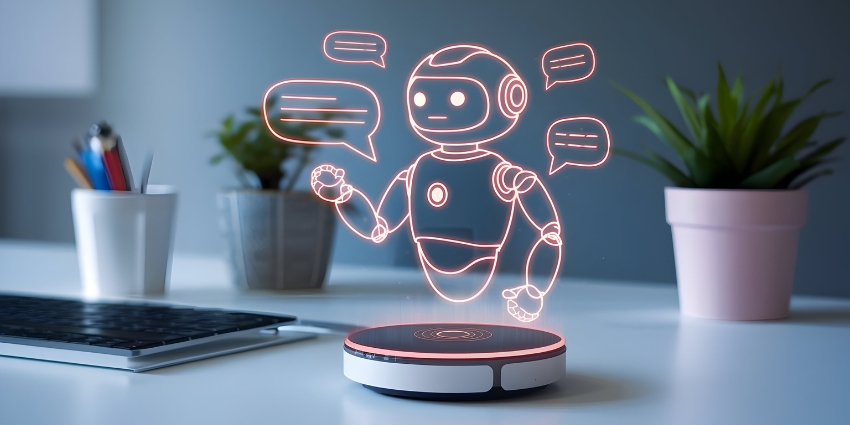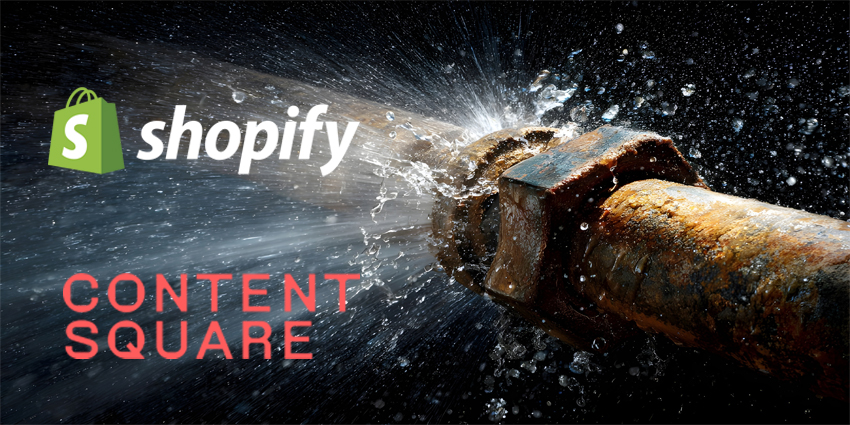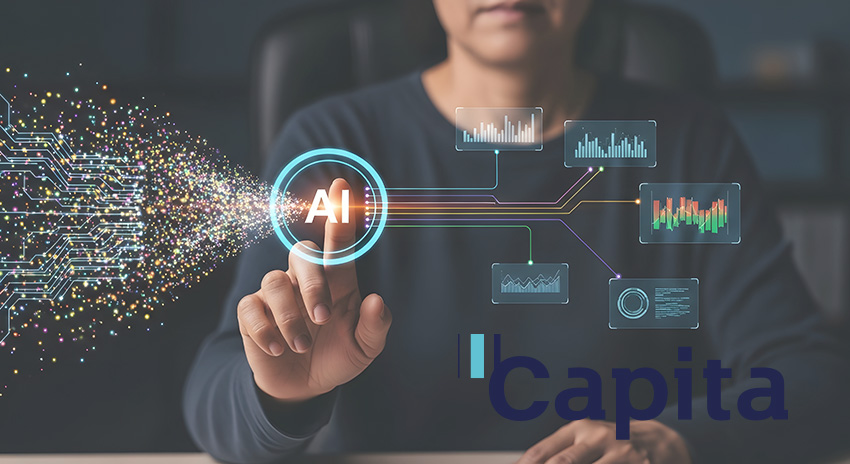What is a Customer Data Platform? It’s a question that’s getting harder to ignore inside enterprise boardrooms, and harder to answer with old definitions.
A decade ago, CDPs were viewed as a niche tool for marketing ops teams. Today, they’re being re-evaluated as strategic infrastructure for organizations struggling with data chaos, regulatory uncertainty, and fragmented customer experiences.
Customer journeys don’t follow scripts anymore. A buyer reads an email in the morning, taps a push notification at lunch, then calls support before checkout. Every system sees a piece of that journey. Most don’t talk to each other.
That’s the problem CDPs are built to solve.
They pull in customer data from all over and connect it into one place. Marketers use the system to personalize. Analysts use it to predict. Legal teams use it to track consent and data handling.
With the market for CDP platforms now growing at a rate of 39.5% CAGR, there’s never been a better time for enterprises to start exploring their options, or learning how they work.
What Is a Customer Data Platform (CDP)?
A customer data platform is a solution that brings customer data together. It’s not just storing that data, it’s making usable, and useful.
According to the CDP Institute, a true Customer Data Platform is “packaged software that creates a persistent, unified customer database that is accessible to other systems.” That’s the technical baseline. In practice, it means something simpler: less chaos, more clarity.
CDP software collects data from tools already in play: websites, mobile apps, CRM systems, emails, support tickets, even point-of-sale.
The data isn’t trapped in dashboards. It moves across systems, teams, and use cases. A CDP can trigger a personalized message mid-session, route a high-value lead to the right rep, or alert support before a customer churns. Today, there are various types of CDPs:
- Traditional CDPs: The all-in-one platforms that combine ingestion pipelines, identity resolution, segmentation dashboards, integrations, and governance modules. This approach works well for companies looking for speed and simplicity. Everything is pre-integrated
- Composable CDPs: Here the CDP acts more like a control layer. The core data stays in your warehouse and the CDP connects to it. This model separates storage from activation. It gives IT full control over infrastructure, while still letting marketing teams build audiences, launch campaigns, and pull insights from unified profiles.
- Agentic CDPs: Agentic CDPs don’t just unify and activate data, they make decisions. Using AI, they can monitor customer behavior, score intent, generate segments, and trigger journeys automatically. Some route decisions to external systems like CPaaS tools or contact center workflows, adjusting messages or offers in real time based on what a customer does.
The real value of all types? A single customer view that doesn’t sit in theory. It works in real time, across every customer touchpoint, for every team that needs it.
How Does a Customer Data Platform Work?
A Customer Data Platform connects systems that usually don’t speak to each other. It takes scattered data, from marketing, sales, support, product, even in-store, and turns it into a profile that actually makes sense. Then it makes that profile useful.
Most CDPs follow the same core steps.
Step One: Ingest
Data shows up from everywhere. Emails, apps, websites, POS systems, CRMs, ads, chatbots, third-party sources. Even offline events.
A good CDP doesn’t care where it came from or what format it’s in. Structured or messy, real-time or batch, it pulls it in.
Some tools now ingest straight from cloud warehouses like Snowflake. Others tap into event pipelines or use SDKs to capture behavior in-session.
Step Two: Resolve and Unify
Nobody uses one login across channels. Some people shop anonymously, then sign in later. Others change devices or email addresses halfway through a purchase cycle.
That’s why identity resolution matters. CDPs use a mix of deterministic (exact match) and probabilistic (likely match) logic to connect those dots.
Once matched, the CDP builds a unified profile that updates live, and reflects consent preferences, interactions, and history across time.
Step Three: Segment and Orchestrate
Segments can be built using anything: purchase frequency, channel preference, support history, churn risk, lifecycle stage. One system, one view.
Then the orchestration layer kicks in. CDPs push those segments into email platforms, ad tools, mobile apps, contact centers, and more, all from the same profile source.
Some platforms even trigger automations in tools like CPaaS platforms or journey orchestration engines. Others send data back to BI tools via reverse ETL for better modeling.
Step Four: Govern
Consent and traceability are now crucial across customer journeys.
The best CDP platforms handle this too. They align with enterprise security and compliance strategies. Many are tuned for tracking opt-ins, deletions, suppression lists, and lawful basis for processing. Some use AI for automatic data redaction or anonymization.
CDPs don’t just make data available. They make it usable across marketing, support, operations, and analytics.
What is a CDP? The Data CDPs Collect
CDP software only works if the data inside it is complete. That means pulling from every channel a customer touches, across the journey map. This data comes in various forms, such as:
- First-Party Data: Captured directly by the business. Page views, app sessions, email opens, purchases, cart activity. Anything that happens inside owned channels.
- Zero-Party Data: Voluntarily shared by the customer. Survey responses. Preference selections. Form inputs. Chat interactions. Zero-party data has become especially important as cookie-based tracking fades. It’s the most transparent type and often the most valuable.
- Behavioral & Transactional: What people do, and what they buy. Page flows, scroll depth, session time. Order history, product categories, returns. Some platforms also connect browsing to offline purchases, like retail stores or call-in orders, if there’s an identifier.
- Support & Interaction Logs: CDPs often connect to contact center platforms, CRMs, or service desks. That data adds context: what issues came up, how they were resolved, and how long it took.
- Consent & Preference Data: CDPs track consent flags, lawful basis, and versioning of terms, along with how preferences are set and updated. This ensures downstream tools don’t personalize based on outdated or noncompliant data.
- Industry-Specific Signals: Financial institutions might include KYC flags. Retailers often track loyalty tiers or POS metadata. Healthcare CDPs might handle appointment cycles or treatment milestones.
The structure depends on the sector, but the principle stays the same: one profile, built from all corners of the business.
CDP vs CRM vs DMP, and Beyond
There’s a reason people confuse CDPs with other tools. The lines between them aren’t always clear, especially when vendors blend features across categories. But the roles are different. A Customer Data Platform doesn’t replace a CRM, or a data warehouse. It sits alongside them.
CDP vs CRM
CRM systems are designed for managing known contacts. Sales teams use them to log calls, track deals, and monitor pipelines. CDPs, by contrast, pull in both anonymous and known behavior. They track what someone does before they ever fill out a form.
That includes app sessions, web visits, and product usage. Then, once the person is identified, the CDP merges that activity into a unified profile.
CDP vs DMP
DMPs (Data Management Platforms) focus on third-party data. They use cookies and device IDs for anonymous targeting, mostly for ad buying. Data inside a DMP usually expires within 90 days.
CDPs work with first-party and zero-party data. They store it long term, build persistent profiles, and connect it across teams. In a post-cookie world, CDPs are increasingly replacing DMPs in the stack.
CDP vs Data Warehouse
Data warehouses are built for storage and analysis. They handle massive volumes, structured queries, and historical reporting. Think Snowflake, Redshift, BigQuery.
CDPs are built for activation. They act on data. Push it out. Feed downstream systems. Sometimes they pull from warehouses directly, especially in composable CDP setups, but they don’t replace them.
Benefits of CDPs for Enterprise Organizations
Enterprise teams don’t buy technology because it’s trendy. They buy it to fix problems. To simplify complexity, to speed things up, and to prove value.
What is a Customer Data Platform in this context? It’s not just a database. It’s an operating layer that connects marketing, sales, support, analytics, legal, and IT, with one shared view of the customer.
That alone unlocks benefits across the business.
1. One Customer, One Profile
Most companies don’t lack data. They lack alignment. The CRM has email activity. The ad platform tracks sessions, while VOC platforms monitor feedback. Support logs live in a separate system. Data teams work from a warehouse nobody else touches. CDPs bring all of it into one place.
When every team sees the same real-time profile, purchase history, sentiment signals, consent status, decisions get faster, and friction disappears.
2. Smarter Personalization, Real-Time
Personalization works best when it’s invisible.
CDPs enable that. They update segments as people interact with content. They pass that data into apps, websites, email tools, CCaaS platforms, or journey builders, so experiences stay relevant without manual work.
This isn’t limited to marketing either. Service agents can see churn risk. Sales teams get intent scores. Loyalty programs can trigger personalized rewards instantly.
3. Better Customer Value
When teams operate from a shared view, it’s easier to retain customers, and increase lifetime value. CDPs help predict behavior based on actual usage, not assumptions. They catch patterns that suggest churn, surface cross-sell signals, or prioritize customers who are most likely to convert.
That data flows directly into CRM systems, email sequences, or support prioritization, wherever it’s needed.
4. Privacy Built In
Every profile includes consent status and lawful basis for communication. That’s tracked in real time. If preferences change, the updates hit downstream tools automatically.
That keeps marketing compliant. But it also prevents legal and compliance teams from chasing down mistakes after the fact.
5. Cross-Functional Efficiency
IT controls the infrastructure. Marketing uses the profiles. Support sees key context. Analysts feed models with unified inputs. Instead of everyone pulling from their own source of truth, the CDP creates a foundation everyone can build on, with security and speed.
6. Measurable ROI
CDPs improve time to insight. Time to personalization. Time to campaign. They cut down the number of platforms needed to make a decision.
According to research, 72% of companies using AI-driven CDPs have seen a significant increase in ROI and faster time-to-value across new product launches and CX experiments.
The payback comes not from flashy dashboards, but from fewer delays, better targeting, and less time spent asking, “Where’s that data?”
CDP Use Cases Across Industries
The value of a Customer Data Platform doesn’t stop at marketing. Different industries use CDPs to solve very different problems, from churn to compliance to personalization at scale. What they share is complexity. Multiple systems. Multiple teams. Customers who expect fast, tailored, and consistent interactions. Here’s how CDP software delivers value across sectors.
Retail: Real-Time Offers That Make Sense
Retail CDPs connect in-store purchases with online behavior. Someone clicks a product in an email, walks into a location, and buys something else, the system knows, and the next message reflects it.
Loyalty programs update in real time. Abandon-cart campaigns respond within minutes. Push notifications and CPaaS integrations deliver time-sensitive promotions when they make sense.
In brick-and-mortar environments, CDPs also help with inventory-based personalization, like suggesting alternatives based on local stock.
B2B SaaS: Catching Churn Before It Happens
SaaS companies rely on retention. A CDP combines product usage data with support tickets, CRM notes, and billing flags to spot accounts showing signs of churn.
That profile can trigger alerts inside the sales platform, push tailored content, or route a renewal reminder to the right rep, all before the customer walks away.
This goes beyond MQLs. CDPs can score likelihood to renew, likelihood to expand, and even identify upsell windows based on actual behavior.
Healthcare: Secure, Personalized Experiences
In healthcare, timing and trust are everything.
CDPs in this space help unify patient engagement across portals, apps connected by CPaaS, appointment systems, and follow-ups, while maintaining HIPAA-compliant data handling and strict consent control.
A patient asks a question via chatbot. Books an appointment online. Misses a follow-up. The CDP connects the dots so the care team can act with the right context.
Financial Services: Privacy-First Personalization
CDPs give banks and insurers a way to tailor communications based on customer behavior without violating consent or crossing compliance lines.
Segmenting by lifecycle stage, account status, or transaction type allows institutions to deliver high-value offers, nudge product adoption, or flag risk, all with the audit trails and data governance regulators expect.
Leading CDP Vendors & Market Insights
The number of companies offering CDP platforms has increased. The 2025 Gartner Magic Quadrant highlights just how diverse the market has become. Some vendors focus on speed and usability. Others lean into composable architecture or embedded AI orchestration. For enterprise buyers, the right fit depends on use case, internal data maturity, and integration needs.
Major players include:
- Salesforce: Salesforce’s CDP is fully integrated with the broader Salesforce stack, including Marketing Cloud, Service Cloud, and Commerce Cloud. It’s a strong choice for orgs already committed to Salesforce. The strength lies in real-time data activation and native AI models tied into Einstein.
- Tealium: Known for its real-time zero-party data capture features, Tealium combines privacy, consent, and flexible insights with a strong pricing model. It also has an expansive partner ecosystem, which makes integration simpler.
- Oracle Unity: Oracle Unity is a traditional, bundled CDP that brings together data from marketing, sales, and service across Oracle’s ecosystem. It’s strong in retail, telecom, and finance, especially for global enterprises with strict governance needs.
Need help choosing? Explore the CDP market map.
How to Choose a CDP: A Strategic Guide
After “what is a CDP” the next question companies ask is often, “How do I pick the right one?”
A Customer Data Platform can do a lot. But not every CDP fits every business.
Choosing the right one starts with clarity, about what problems you’re solving, who owns the process, and how the tech fits into your existing stack.
- Start With Goals: What’s the real driver? Personalization across channels? First-party data strategy post-cookie? Consent and compliance management? Define 2–3 high-value use cases. Use those to shape the requirements.
- Map the Stack: What systems already house customer data? CRM? Data warehouse? Commerce tools? Call center platforms? The CDP should integrate with those, not duplicate them. Composable CDPs might work best if you already use a strong data warehouse like Snowflake or Databricks. Traditional CDPs may move faster for teams starting from scratch.
- Check Scalability and Control: Think long-term. Can the CDP grow with your business? Does it give IT the governance and observability they need? Can it support marketing without engineering bottlenecks? Look for flexible APIs, support for real-time syncs, and user controls that map to your org.
- Run a Cross-Functional RFP: This should involve marketing, data, legal, and IT from day one. Ask about: data model flexibility, consent handling, identity resolution accuracy, pre-built and custom connectors, AI capabilities, and warehouse integrations.
- Plan for Buy-In: Even the best CDP won’t work without adoption. Define who owns the rollout. Who trains teams. Who monitors data quality. Who manages compliance risk. Clarify those roles early, and set expectations accordingly.
What’s Next: CDPs in an AI-Driven Future
The future of the Customer Data Platform isn’t static profiles and batch updates. It’s real-time, responsive, and increasingly autonomous. AI isn’t just a feature anymore. It’s reshaping how CDP software is built, deployed, and used across teams.
Trends include:
- Agentic CDPs: Instead of waiting on fixed rules, agentic CDP systems interpret intent, predict outcomes, and adjust actions in real time. A customer opens an app but doesn’t engage. Instead of a generic retargeting email, the CDP may route them to a conversational bot, change the homepage offer, or pause outreach entirely based on live models.
- Real-Time Infrastructure: Legacy CDPs worked in batch mode. Data was refreshed every few hours, sometimes daily. That no longer works. Modern stacks need streaming ingestion, event-based orchestration, and response times measured in milliseconds, not minutes.
- Composable CX The next evolution isn’t just smarter CDPs. It’s composable CX, AI-enhanced platforms where CDPs work alongside CPaaS, analytics, orchestration tools, and support systems. Every part of the stack shares live customer context. Every system acts with that context. AI helps prioritize what matters most, across every channel.
Discover what’s next with the latest industry research.
What is a Customer Data Platform for Today’s Enterprise?
CDP software gives enterprise teams a way to build real-time, privacy-safe, AI-enhanced experiences on top of a unified customer foundation.
That’s not just a marketing win. It’s operational stability. It’s compliance without complexity, and it’s the ability to personalize every interaction across digital, human, and hybrid touchpoints.
In a time where data privacy is tightening, AI is accelerating, and customer expectations are climbing fast, the need for CDPs has moved from optional to essential.
If the business needs faster decision-making, better engagement, or cleaner data to support AI rollouts, the CDP is where it starts. CX Today brings together the people, vendors, and platforms shaping the next phase of customer experience.
Ready to move forward?
- Join the CX Community: Stay ahead of the curve with insights from global leaders and practitioners in the CX Community.
- Test the Tech: See live demos, walkthroughs, and product briefings from top CDP vendors at upcoming CX events.
- Plan Your Next Investment – Use our CX Marketplace to compare options across the full CX stack, from Customer Data Platforms to CRM, CCaaS, BI, and beyond.
Need a broader view? Visit the full CX Guide for a look at the future of customer experience.







